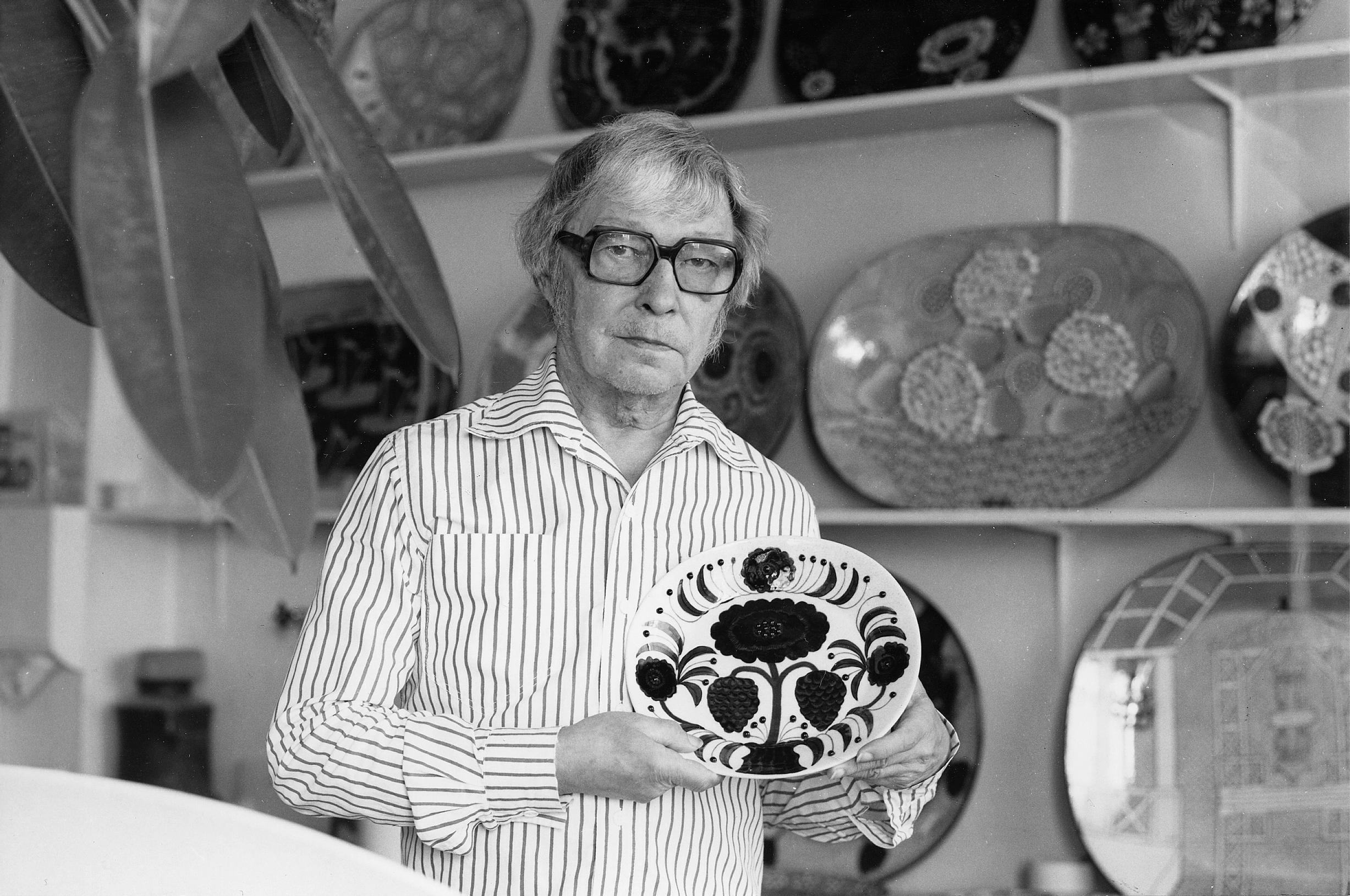
Finnish ceramicist Birger Kaipiainen defied post-war minimalism with rich decoration
Birger Kaipiainen (1915–1988) had a 50-year career as a designer and ceramicist. His decorative style was characterized by rich colors, natural motifs, and influences from fairy tales and fantasy. Mass production was a foreign concept to him.
Contemporaries remember Birger Kaipiainen as an enigmatic gentleman—a bit of a dandy who dressed in a brown velvet suit and walked with a cane. Upon graduating in 1937, Kaipiainen joined Finnish ceramics company Arabia’s art department and worked there for fifty years. Although the state of Finland granted him an artist’s pension in 1981 that would have sustained him for the rest of his life, he continued working as a freelancer until his death.
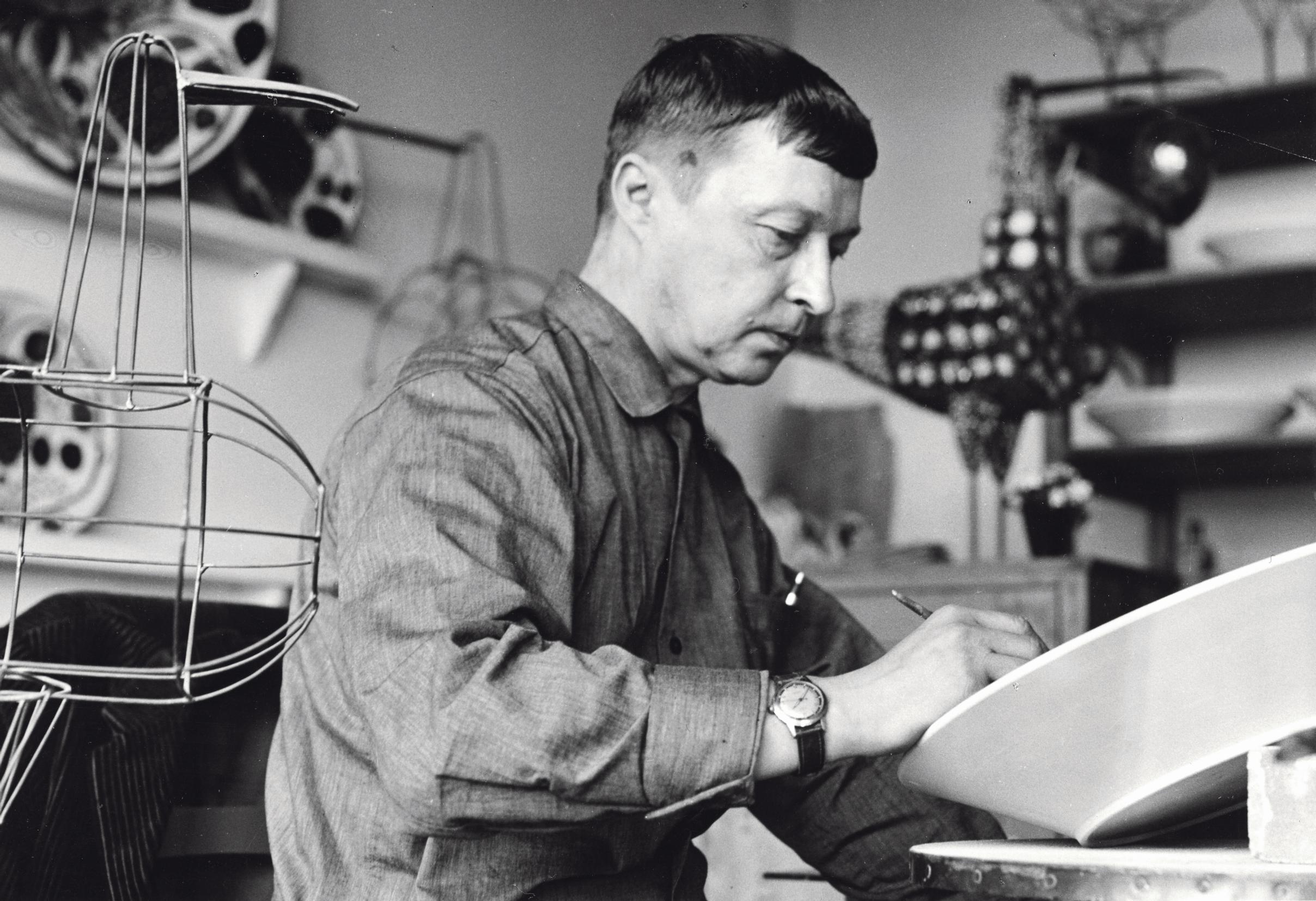
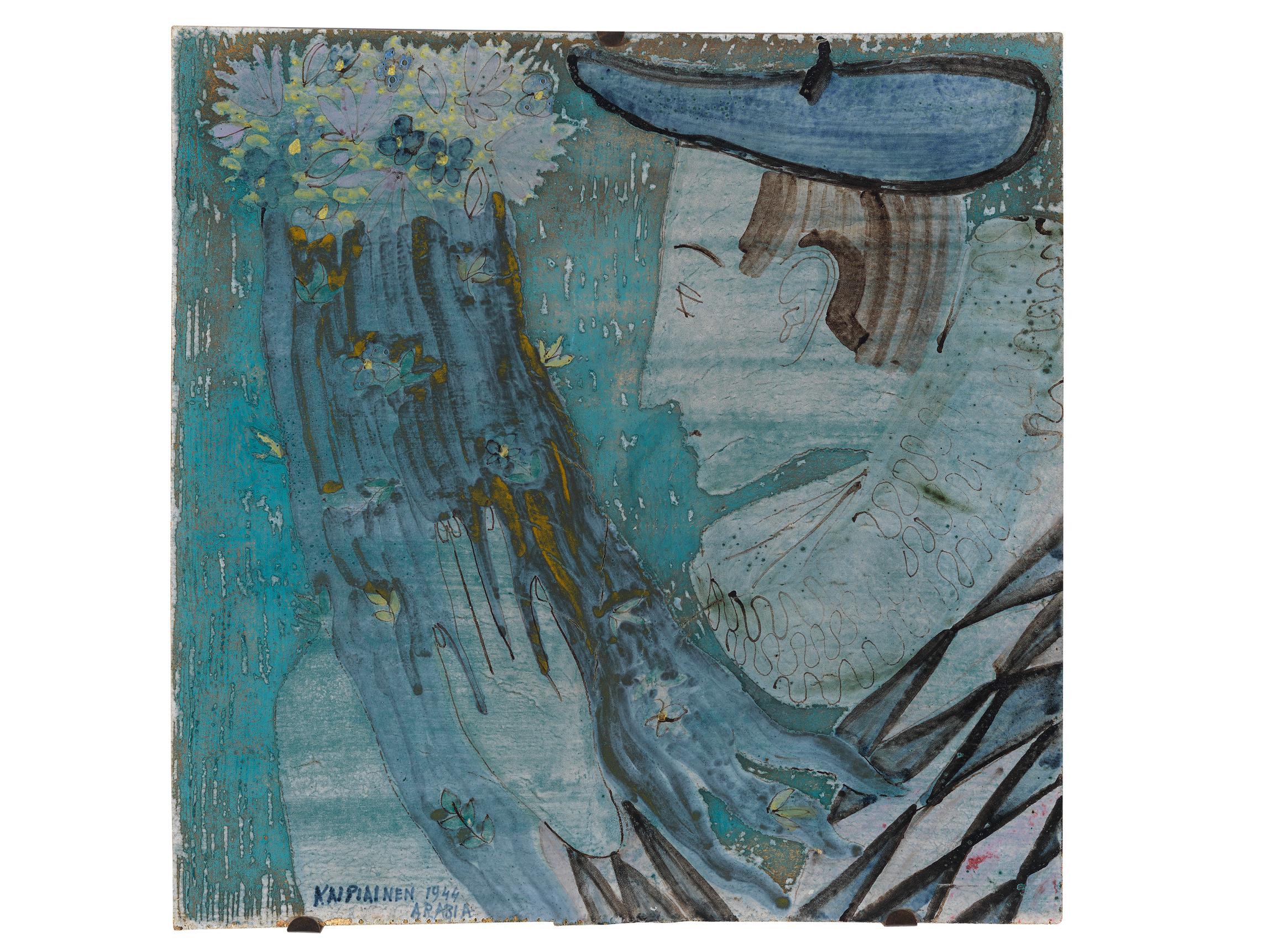
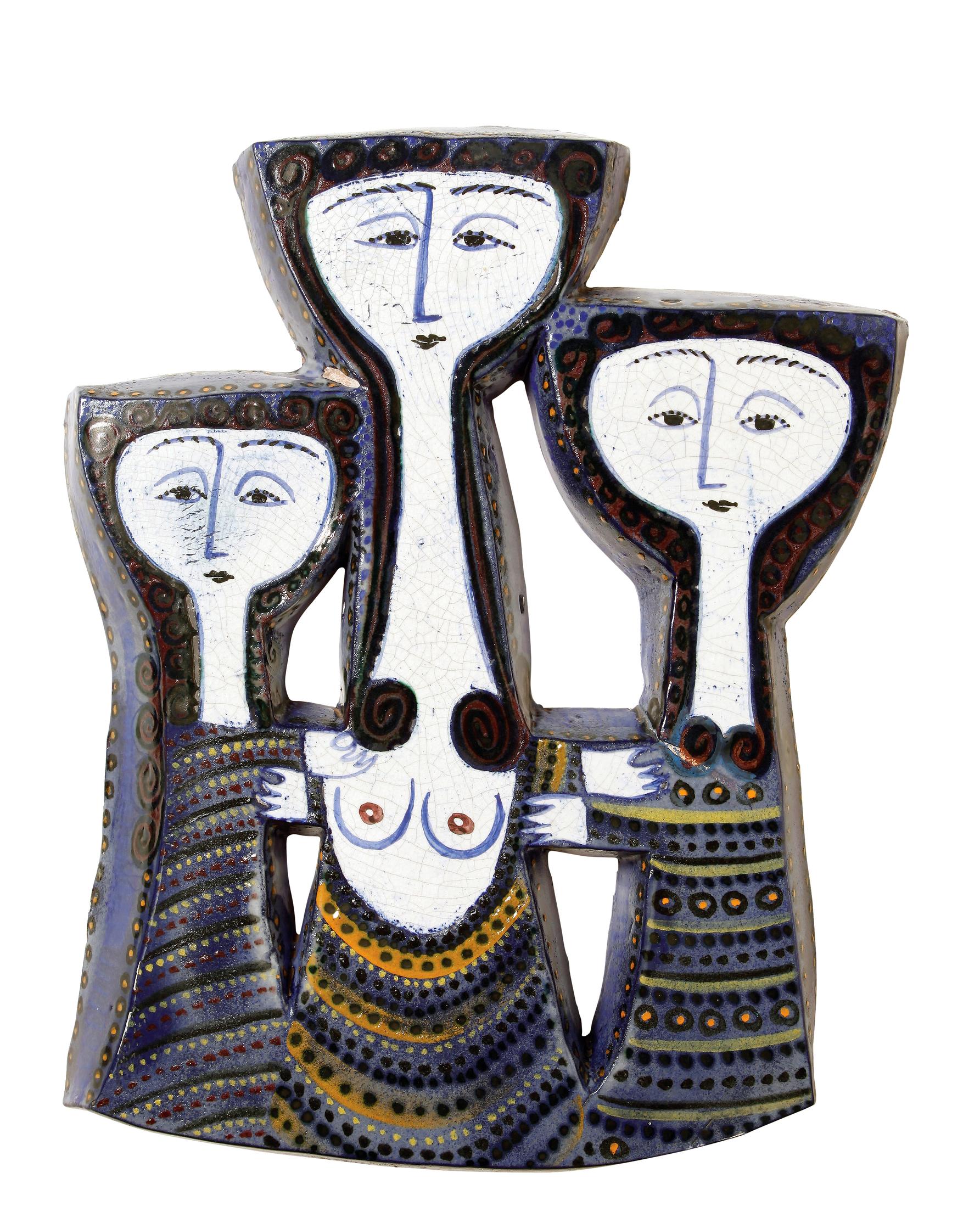
Form and ornamentation merged into one in Kaipiainen’s ceramic art. He mostly created unique ceramic pieces but also designed a few products over the years. Arabia’s desire to mass-produce products did not appeal to him at all.
In the 1950s, critics described Kaipiainen’s pearly ladies and ceramic beauties as mystical, romantic, and decadent—implying they were questionable works for a man to create. Nevertheless, these designs found their buyers.
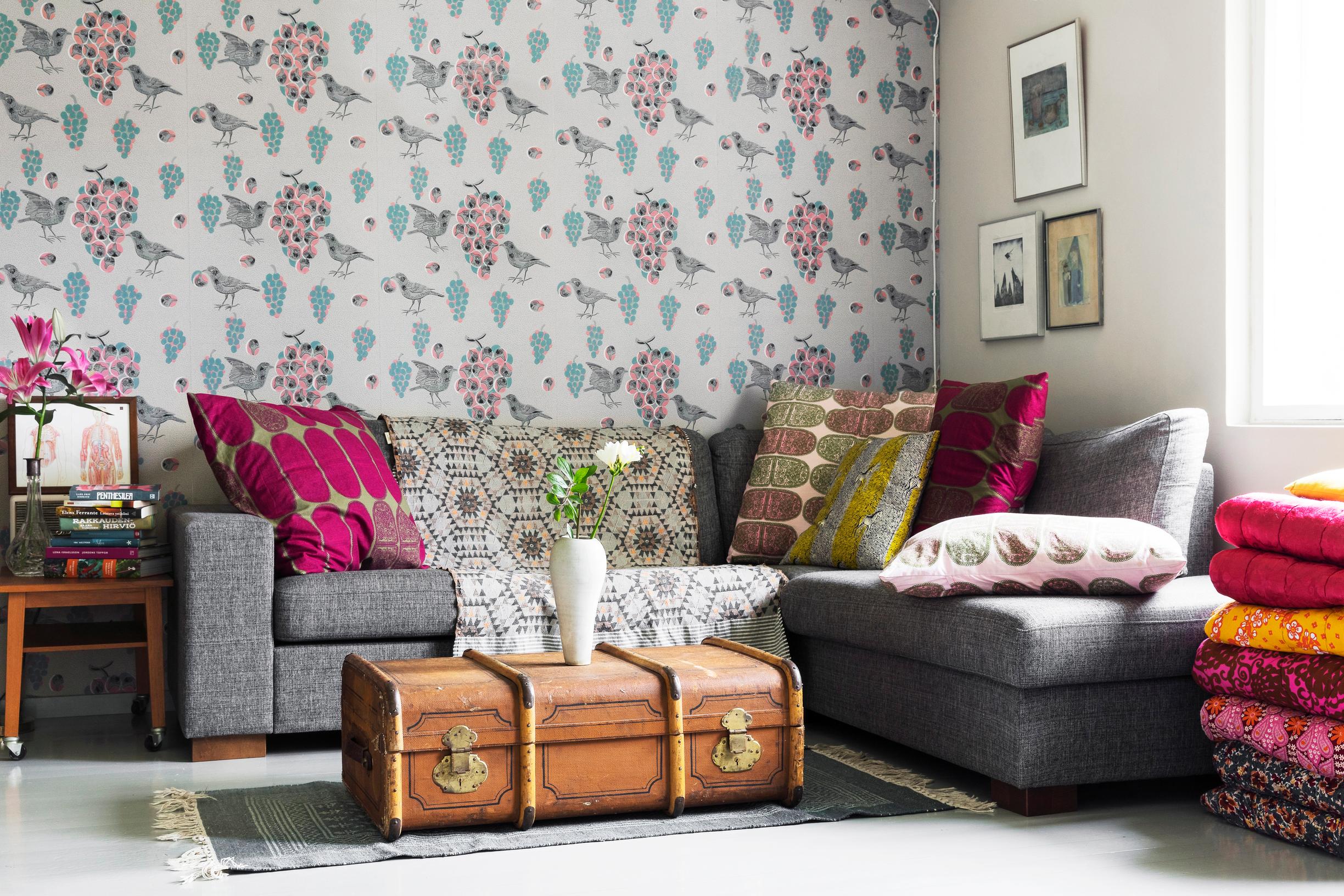
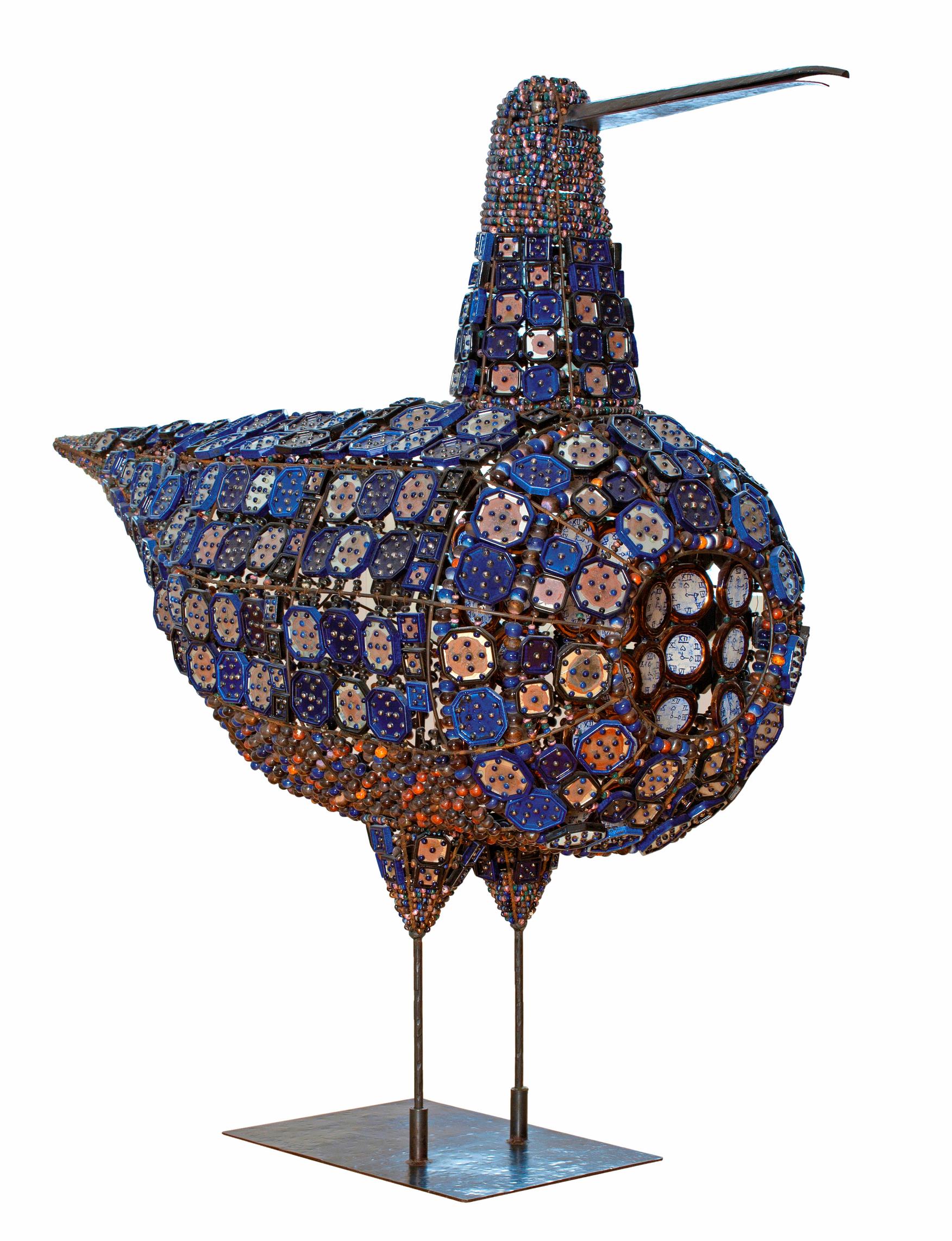
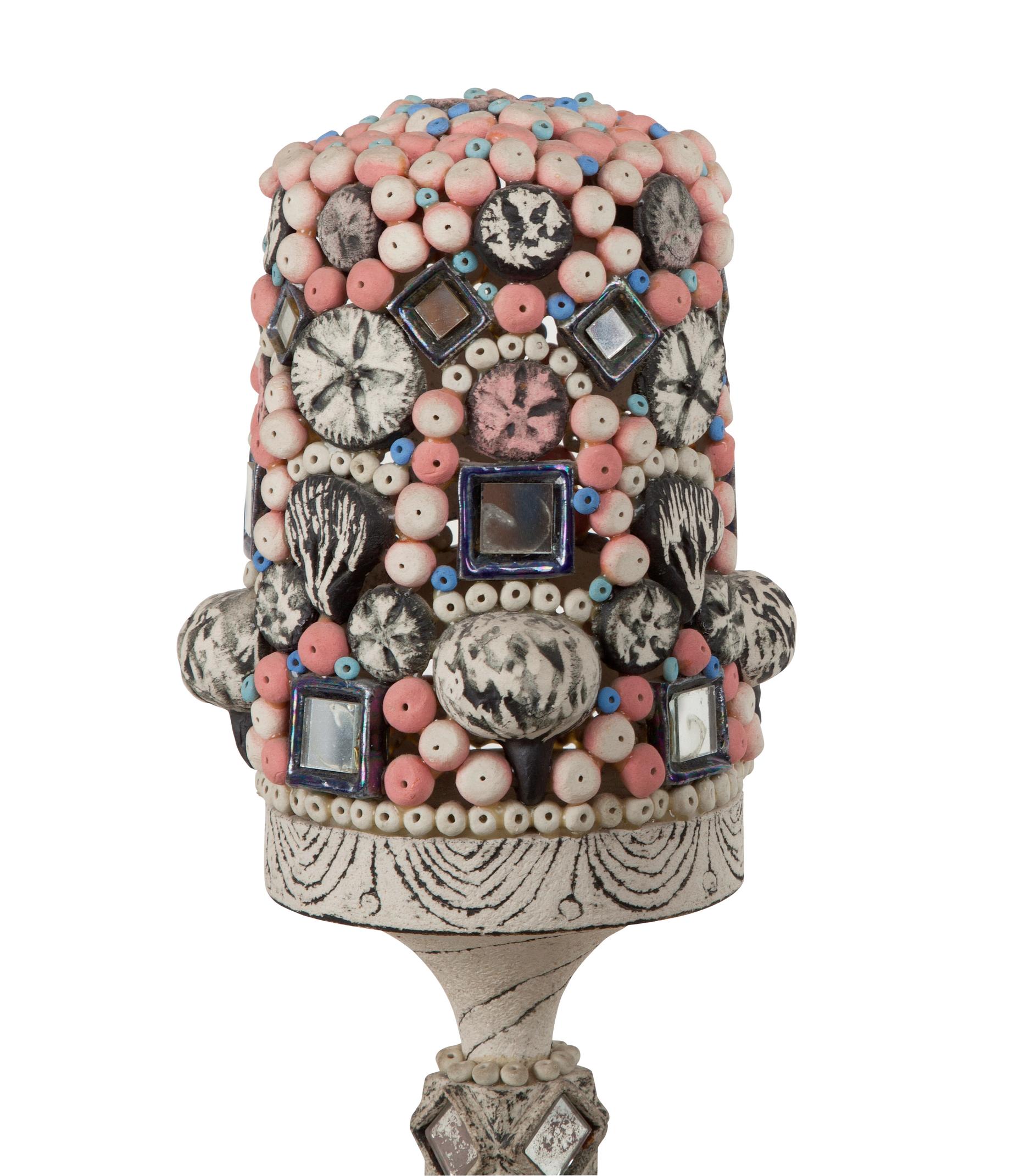
Kaipiainen’s works borrowed imagery from the world of fairy tales and fantasy, and they were romantic and rich in color.
“Chopin loved violets, and I love Chopin,” Kaipiainen revealed in an interview.
He frequently incorporated blue violets here and there, even in his few designs intended for industrial production, which have become classics. The poetic Kiurujen yö (‘The Night of the Larks’) from 1958, featuring violets and birds, is now Finland’s most famous wallpaper pattern.
The most grandiose work of his career was the over nine meters wide and four and a half meters high Orvokkimeri (‘Sea of Violets’). Kaipiainen created it for the 1967 Montreal Expo, and it now resides in the Tampere City Council chamber.
Imagination costs nothing. It has no limits, and no one can dictate where it ends.Birger Kaipiainen in his 60th birthday interview in the national newspaper Helsingin Sanomat
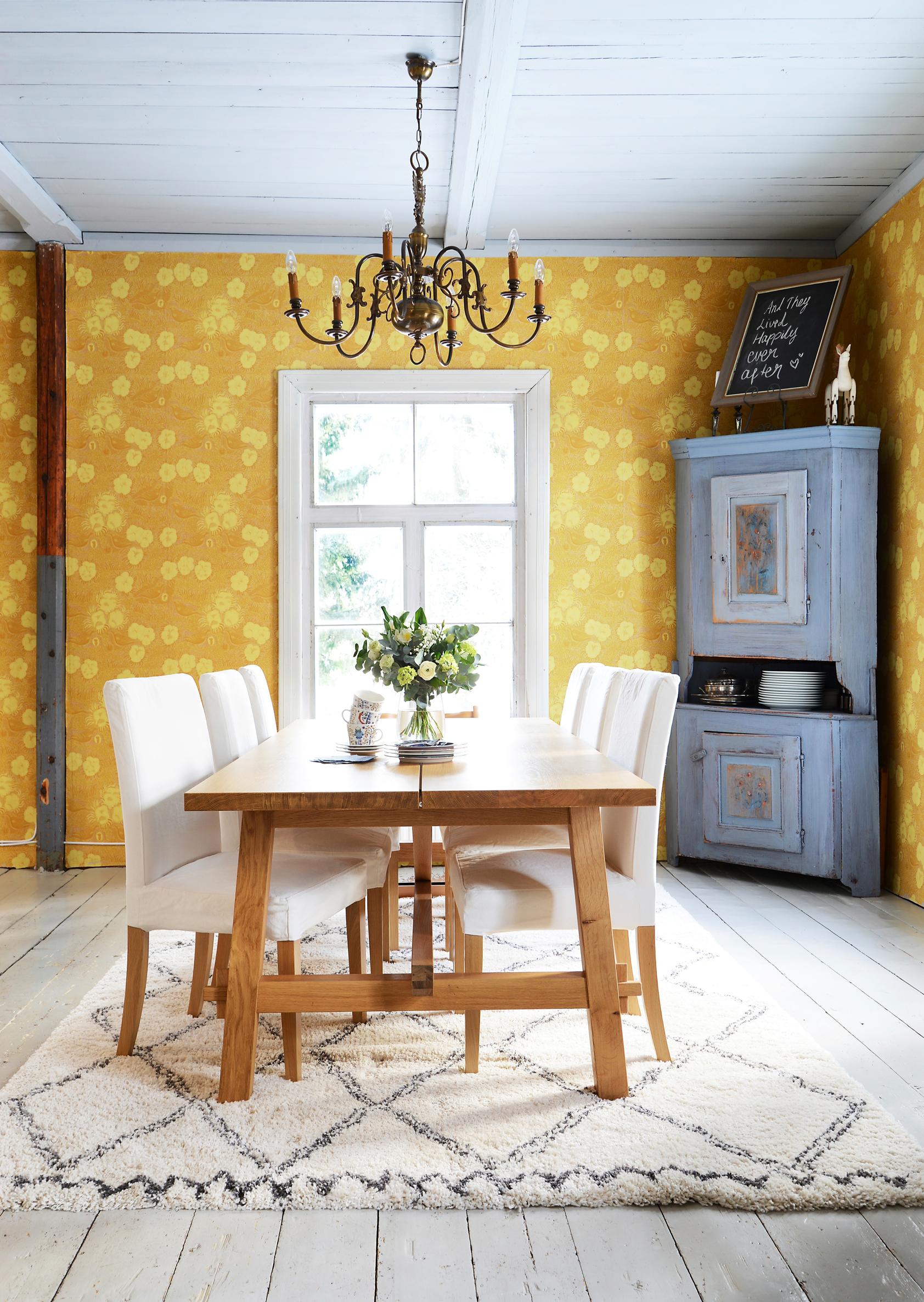
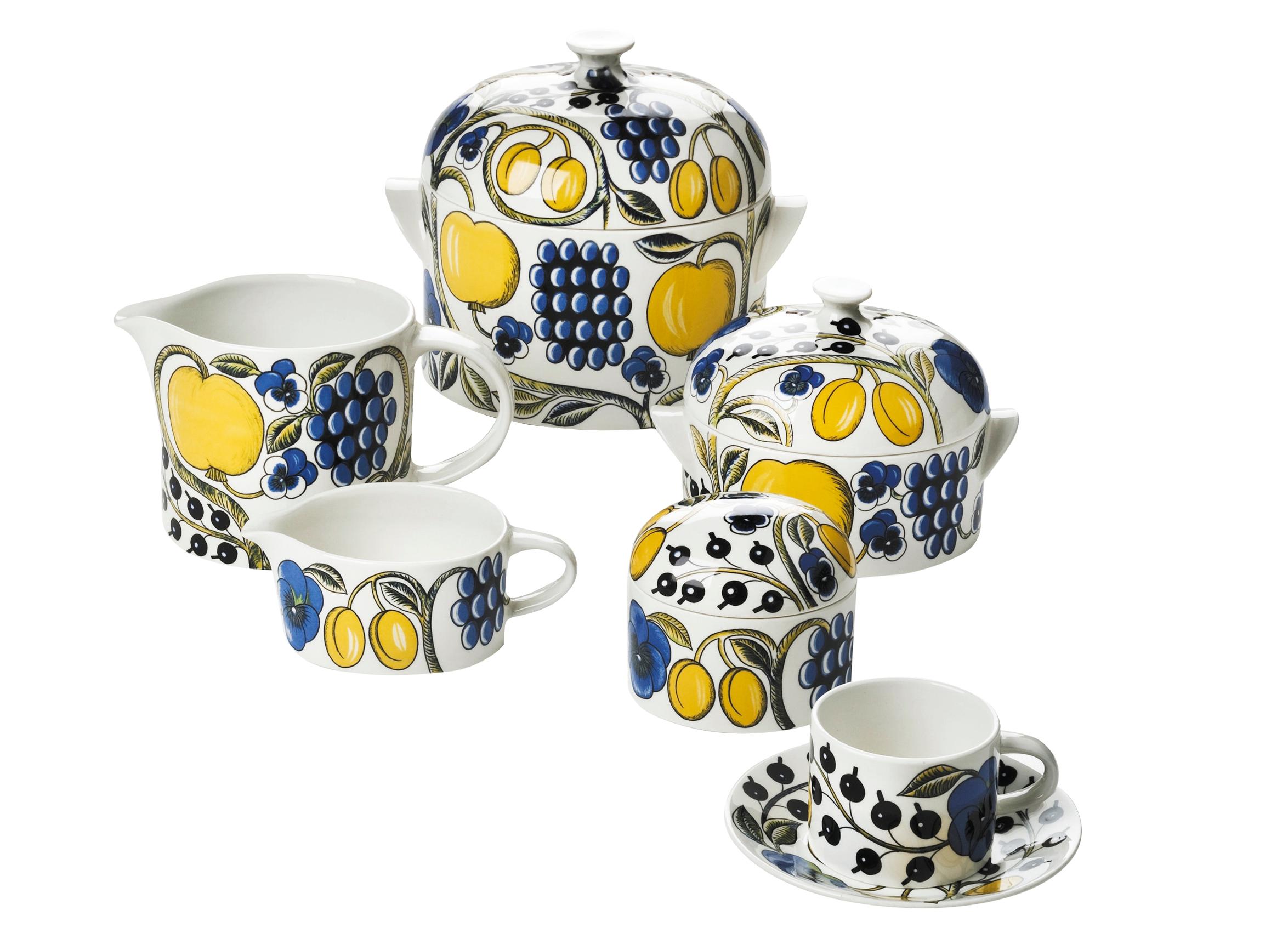
Kaipiainen’s penchant for ornamentation was at its peak in the 1960s. During that time, his wall plates were filled with fruits, plants, and pearls. The lush Paratiisi ('Paradise’) from 1969 has proven to be a timeless favorite. Kaipiainen designed both the shape and the decorative motif of the tableware. The set was also available in black and white from 1969 to 1974 and again since 2000. Today, there is also a lilac version.
Kaipiainen’s works were influenced by Early Renaissance, Byzantine ornamentation, and Orthodox art. He was an eccentric in his time, as post-war Finnish design valued practicality and simple forms.
Kaipiainen shunned a certain ideal of asceticism that prevailed in Finland. Because of this, his contemporaries sometimes reacted coolly to his works.
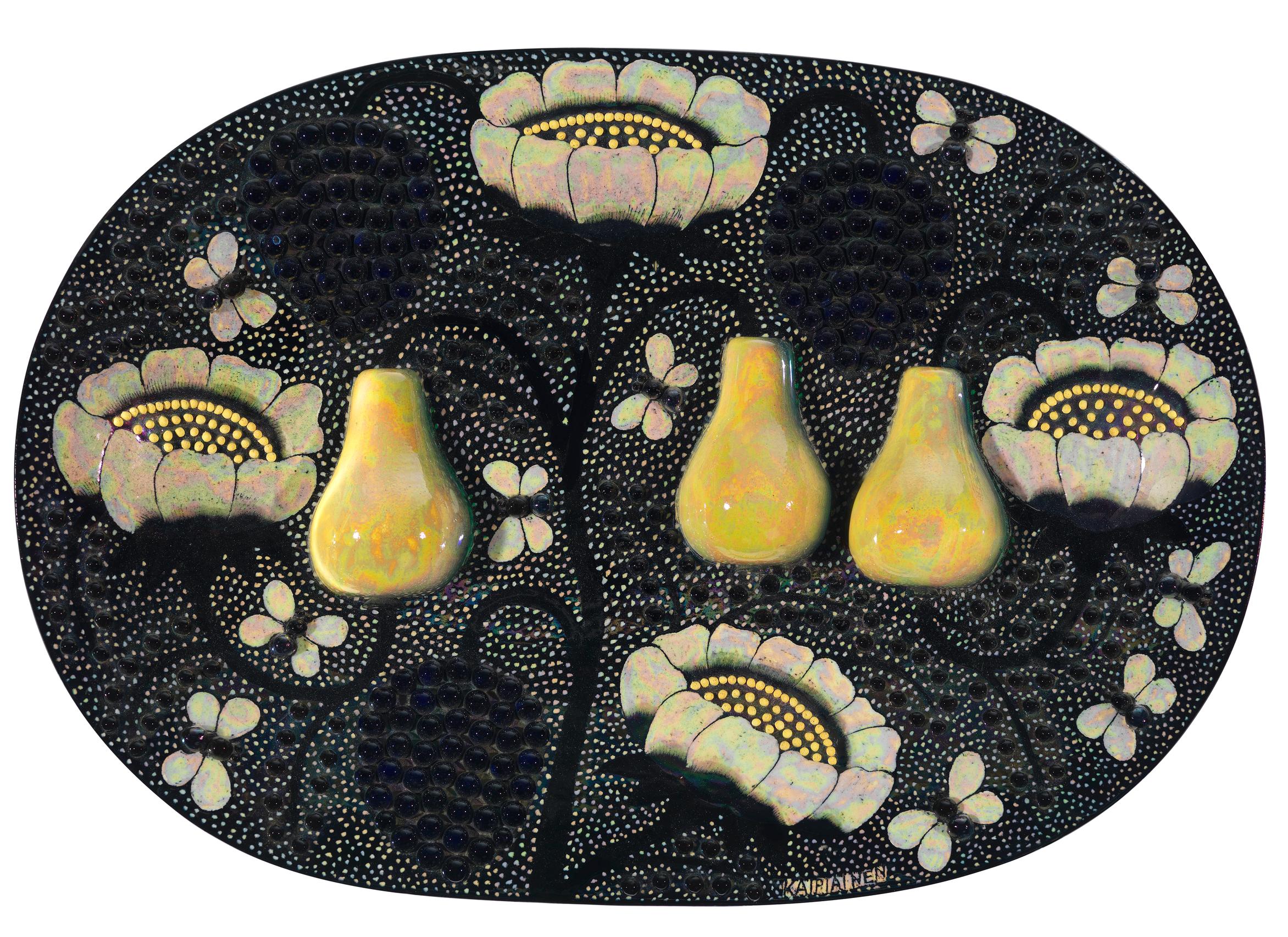
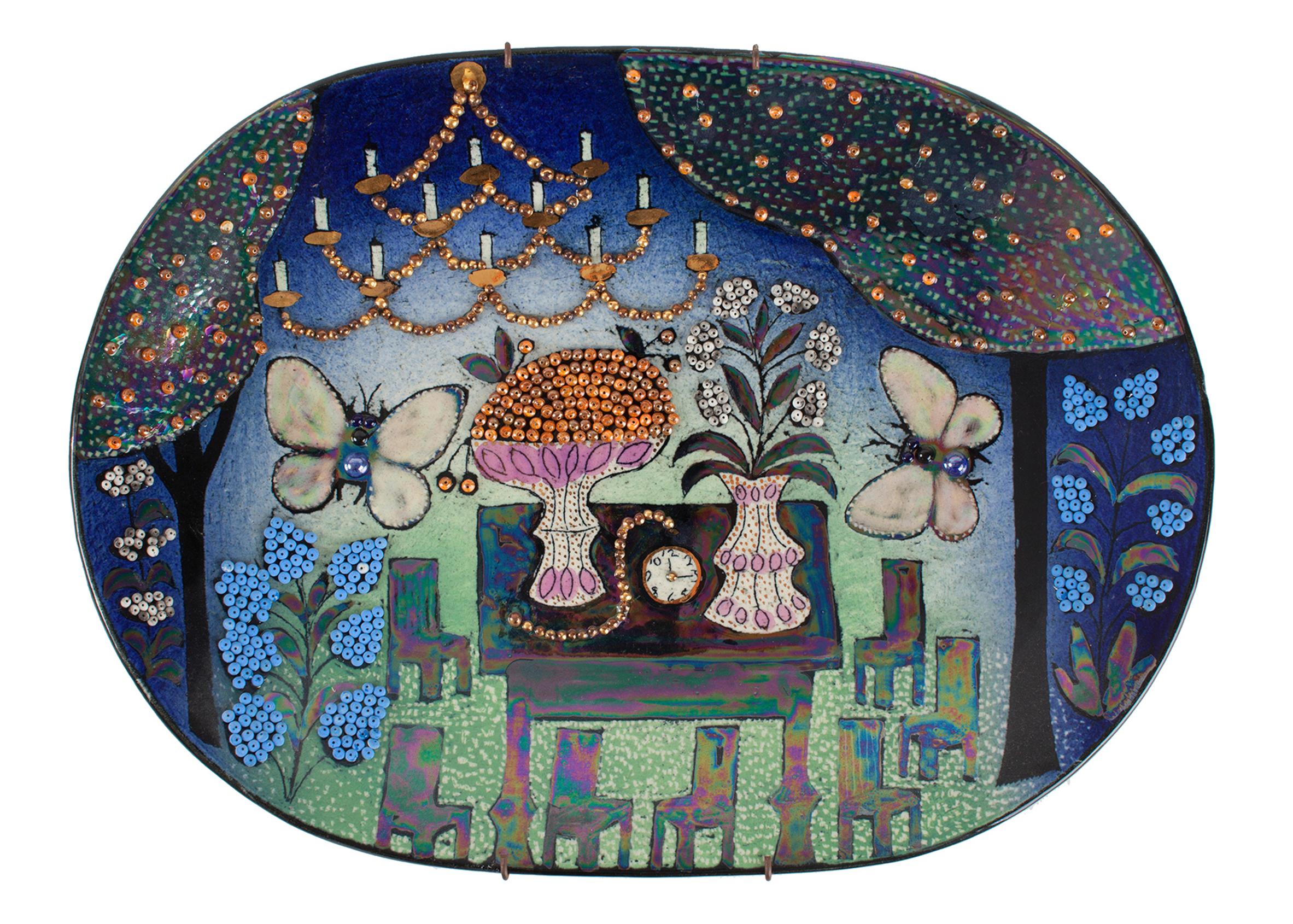
Kaipiainen began to rise as an art celebrity when he worked for Rörstrand in Sweden from 1954 to 1958 and gained international attention. One milestone was his ceramic bead birds exhibited at the Milan Triennial in 1960, which earned him a Grand Prix.
Kaipiainen’s family continues his legacy. The Kuovi online store sells his patterns on products ranging from napkins to bedspreads.
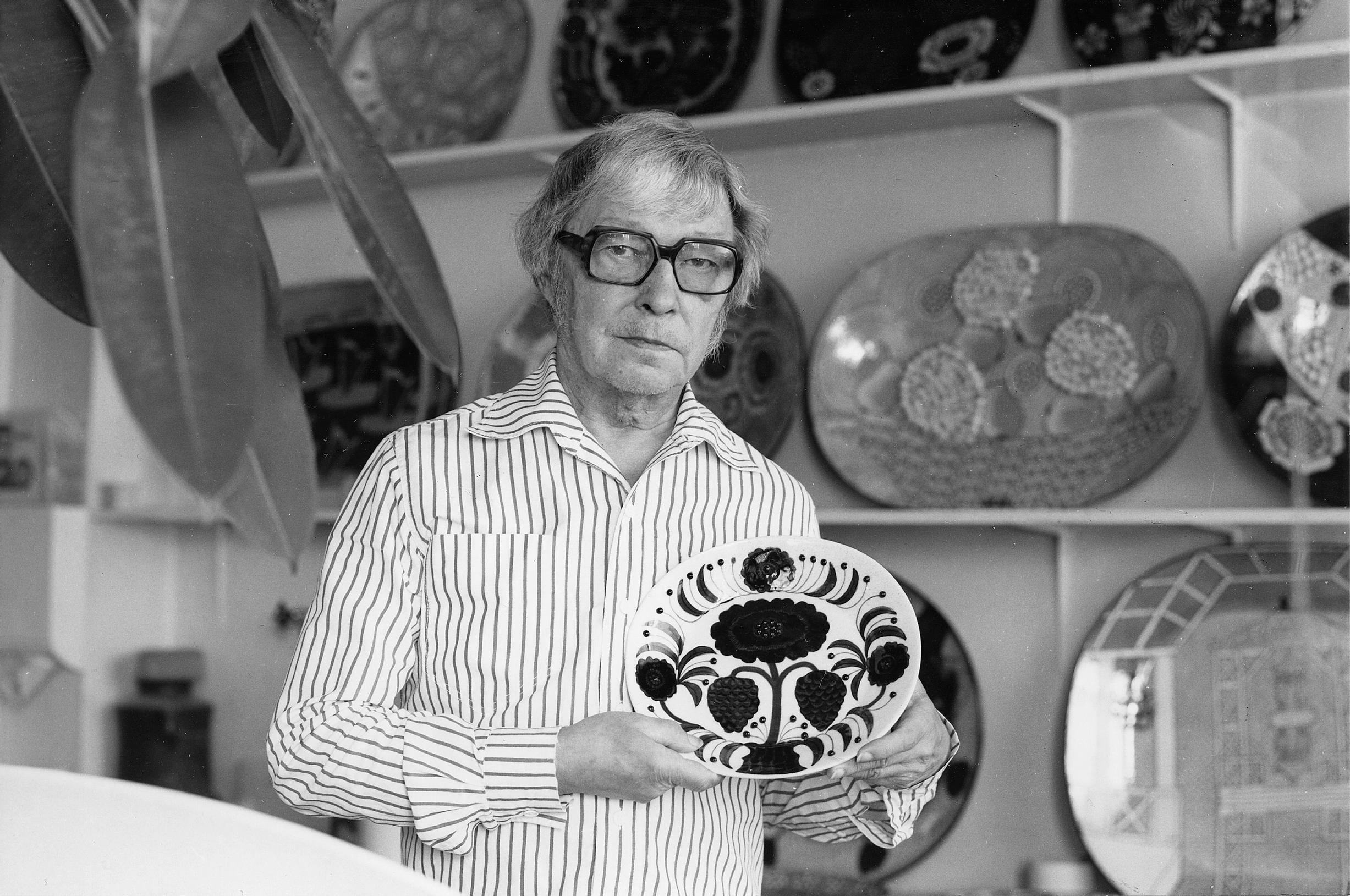
Birger Kaipiainen
- Born the son of a conductor in Pori in 1915, he soon moved with his family to Helsinki.
- Due to polio and its misdiagnosis, he became disabled in his twenties.
- Graduated from Taideteollisuuskeskuskoulu (“Central School of Applied Arts”; now Aalto University School of Arts, Design and Architecture) in 1937 and started working at the art department of the Arabia factory.
- Organized his first exhibition together with ceramicist Toini Muona at the Hörhammer Gallery in Helsinki in 1944.
- His most famous products that entered industrial production are the wallpaper patterns Kiurujen yö and Ken kiuruista kaunein (1958) for Pihlgren & Ritola, and the Paratiisi tableware (1969) for Arabia.
- Designed a few decorative plates in the 1980s as a limited series of 2,000 pieces.
- Even after the state of Finland granted him an artist’s pension in 1981, he continued working almost daily. Kaipiainen died at the end of a workday in July 1988.
Source: Antti Järvi’s article “Paratiisin lapsi” in Avotakka magazine 8/2013


